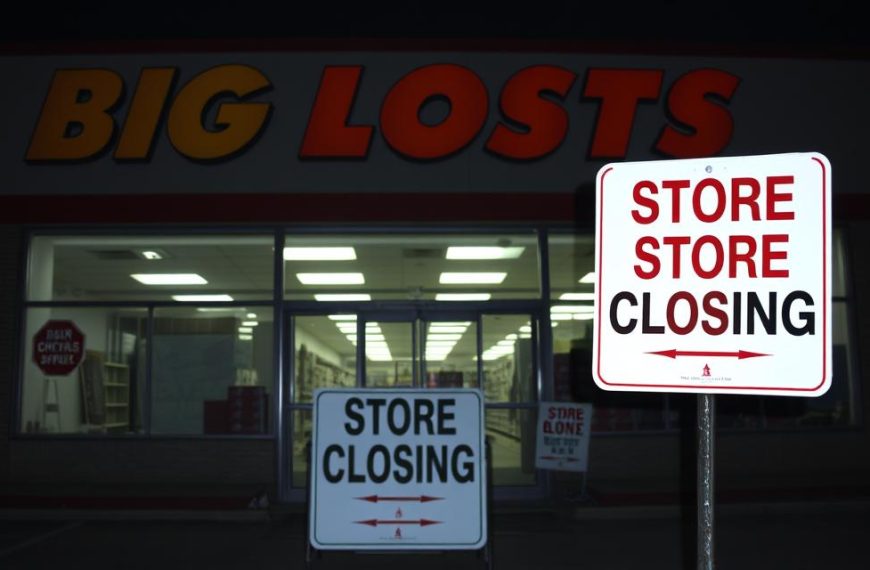Navigating coverage expenses remains a critical challenge for enterprises. Recent data reveals general liability protection averages £33 monthly, while comprehensive policies like business owner’s packages cost £45. These figures highlight the varied pricing structures across policy types – a reality every organisation must confront.
Understanding premium calculations requires analysing industry risks, workforce size, and operational locations. For instance, cyber protection averages £115 per month due to rising digital threats. Such factors demonstrate why tailored solutions often outperform generic plans.
Contrary to popular belief, affordable safeguards exist for ventures across sectors. Workers’ compensation typically costs £36 monthly – manageable for most budgets when prioritised correctly. This guide will demystify pricing models through current market analysis and insurer insights.
We’ll explore cost-saving strategies without compromising coverage quality. From comparing providers to evaluating claims history impacts, our breakdown equips decision-makers with actionable intelligence. Stay tuned for specific price benchmarks from leading insurance companies.
Understanding Business Insurance and Its Importance
Operational risks lurk around every corner for modern enterprises. Protective measures transform vulnerabilities into manageable challenges through structured financial planning. This section examines core concepts and advantages for organisations navigating complex risk landscapes.
Defining Operational Safeguards
Company protection plans act as shields against unforeseen financial blows. These arrangements combine multiple policy types addressing distinct threats:
| Coverage Type | Protection Scope | Key Benefit |
|---|---|---|
| General Liability | Third-party injury/property damage | Legal cost coverage |
| Professional Liability | Service-related errors | Client dispute resolution |
| Workers’ Compensation | Employee workplace injuries | Medical expense coverage |
Advantages for Growing Enterprises
Emerging companies gain critical stability through tailored safeguards. Legal defence support proves invaluable when facing liability claims – even unfounded lawsuits drain resources without proper coverage.
Contract opportunities often require proof of protection. Landlords and clients increasingly demand verified policies before finalising agreements. This requirement makes comprehensive plans essential for market competitiveness.
Financial resilience separates thriving ventures from struggling ones. Customised solutions address specific operational risks while maintaining budget efficiency. The right combination of policies creates layered security without unnecessary overlaps.
How Much Is Business Insurance?
Protection costs for enterprises show striking variations across policy categories. General liability coverage leads affordability at £33 monthly, while cyber protection commands £115 due to escalating digital threats. This disparity underscores the importance of strategic policy selection.
Monthly premiums reflect operational scale and risk exposure. Smaller ventures typically spend £300-£1,500 annually for essential safeguards. High-risk sectors like construction face steeper pricing, sometimes exceeding standard ranges by 40%.
Bundling multiple protections generates notable savings. Business owner’s policies combine general liability and property coverage for £45 monthly – 27% cheaper than separate purchases. This approach demonstrates cost-efficiency without compromising defence layers.
| Policy Type | Monthly Cost | Annual Cost |
|---|---|---|
| General Liability | £33 | £395 |
| Professional Liability | £48 | £576 |
| Cyber Protection | £115 | £1,380 |
Premium structures enable financial flexibility through instalment payments. This accessibility helps organisations maintain continuous coverage, even with tight cash flow. Savvy budgeting transforms insurance from an expense into a strategic asset.
Evaluating Policy Types and Coverage Options
Modern organisations require strategic selection of safeguards to address operational vulnerabilities effectively. Matching protections to risk profiles ensures financial stability while meeting legal obligations.

Core Protections for Common Risks
General liability insurance forms the foundation of risk management. It addresses third-party bodily injuries and property damage claims, with coverage limits typically spanning £197,000 to £1.6 million per incident.
Business owner’s policies merge this essential coverage with property protection. This bundling approach often reduces costs by 15-20% compared to separate purchases.
| Policy Type | Coverage Details | Financial Limits |
|---|---|---|
| General Liability | Customer injuries, property damage | Up to £1.6 million |
| BOP | Combined liability + property | Customisable packages |
| Professional Liability | Service errors/omissions | Case-specific limits |
| Workers’ Comp | Employee medical costs | Statutory requirements |
| Cyber Protection | Data breach recovery | Incident-based coverage |
Specialised Coverage Solutions
Professional liability safeguards against client disputes over service quality. These claims-made policies only activate when both incident and claim occur during active coverage periods.
Workers’ compensation remains mandatory for employers in 48 states. It covers medical treatment and lost wages for job-related injuries, with premiums reflecting payroll size and industry risks.
Cyber protection has become critical for digital operations. Policies help manage costs from ransomware attacks and data breaches, which now affect 43% of small enterprises annually.
Factors Influencing Business Insurance Premiums
Premium determination involves multiple variables that shape financial commitments. Insurers assess operational characteristics and external conditions to calculate risk exposure. Understanding these elements helps organisations negotiate better terms and prioritise risk management.
Business Size, Revenue and Claims History
Larger enterprises generally face steeper premiums due to expanded liability exposure. Companies with over 50 staff members typically see workers’ compensation costs rise by 18-25% compared to smaller teams. Revenue figures directly influence coverage limits, as higher earnings often necessitate broader protection.
Claims history remains a critical factor for underwriters. Firms with three or more recent claims may experience 30-45% higher premiums. Insurers view frequent claims as indicators of systemic risk management issues.
| Factor | Impact on Premium | Example |
|---|---|---|
| Business Size | +20-40% for large enterprises | Manufacturing plant vs home bakery |
| Claims History | +30% after 3 claims | Construction firm with injury reports |
| Location | +15-35% in high-risk areas | Florida vs Minnesota offices |
| Industry Risk | +50% for hazardous sectors | Roofing contractors vs accounting firms |
| Property Value | +£1.20 per £1,000 insured | New warehouse vs older facility |
Location, Industry Risk and Policy Qualifications
Geographical factors significantly affect costs. Urban enterprises in high-crime zones often pay 22% more for property coverage than rural counterparts. Coastal businesses face elevated weather-related premiums, particularly in hurricane-prone regions.
Industry classification codes group organisations by risk profile. Roofing contractors typically incur 50% higher premiums than consulting firms due to workplace hazards. Implementing safety certifications can help offset these costs through specialised policy discounts.
Understanding Industry-Specific Insurance Requirements
Industry classification codes shape protection strategies more than many enterprises realise. These numerical identifiers group organisations by operational risks, directly influencing premium calculations. Construction firms typically receive higher-risk codes than consultancies, resulting in markedly different coverage costs.
Regulatory Necessities and Insurance Class Codes
Mandatory safeguards vary dramatically across sectors. Building contractors must carry general liability insurance in most US states, while tech startups often face fewer compulsory requirements. These disparities stem from inherent workplace hazards and legal exposure levels.
Healthcare providers illustrate specialised needs perfectly. Their policies frequently combine medical malpractice coverage with cyber protection – a dual approach addressing both patient care risks and data security threats. Financial penalties for non-compliance can reach £45,000 in regulated industries.
| Industry | Common Requirements | Risk Class |
|---|---|---|
| Construction | General liability + workers’ comp | High (Code 7219) |
| Retail | Property + product liability | Medium (Code 8012) |
| Consulting | Professional liability | Low (Code 8741) |
Commercial auto coverage becomes essential for delivery-based operations, with premium differences exceeding 60% between urban and rural zones. Insurers assess vehicle types, driver records, and cargo values when determining rates for transportation sectors.
Emerging industries face unique challenges. Cannabis businesses navigate conflicting state and federal regulations, often requiring specialised policies not found in standard small business insurance packages. Such complexities underscore the value of working with knowledgeable brokers.
Cost Calculation: Limits, Deductibles and Premium Dynamics
Financial safeguards require careful balancing of protection levels and budget realities. Policy limits and deductibles form the core mechanics shaping premium costs, with each decision impacting an organisation’s risk exposure.
Calculating Policy Limits and Aggregate Limits
Coverage limits define maximum insurer payouts for claims. General liability policies typically offer two thresholds:
| Limit Type | Typical Range | Common Selection |
|---|---|---|
| Per-Occurrence | £197k – £1.6m | £790,000 |
| Annual Aggregate | £395k – £3.2m | £1.6 million |
Aggregate limits reset yearly, creating potential coverage gaps if multiple claims occur. High-risk sectors often choose upper thresholds despite higher premiums.
Effect of Deductibles on Premiums
Deductibles represent the policyholder’s initial financial responsibility. Raising this amount from £395 to £790 typically cuts premiums by 12-18%. However, this strategy requires accessible reserves to could pay upfront costs during claims.
Consider this trade-off:
- £395 deductible = £145 monthly premium
- £790 deductible = £122 monthly premium
Organisations with strong cash flow often benefit from higher deductibles. Those prioritising predictable expenses may prefer lower options. Insurance rate calculations factor these decisions alongside industry risks and claims history.
Effective risk management balances coverage limits with deductible choices. Regular policy reviews ensure protection aligns with evolving operational needs while maintaining cost efficiency.
How to Get Affordable Business Insurance
Strategic financial planning transforms protection costs into sustainable investments. Enterprises can achieve substantial savings through tactical approaches that align with insurer valuation models.
Bundling Policies for Discounts
Combining safeguards with one provider often yields immediate savings. Business owner’s policies (BOPs) merge general liability and property protection at 15-20% lower costs than separate purchases. NEXT Insurance demonstrates this principle, offering 10% discounts for multi-policy clients.
Consider these bundling opportunities:
- Commercial auto insurance paired with workers comp
- Cyber protection integrated with professional liability
- Equipment coverage combined with business interruption plans
Risk Management and Safety Measures
Proactive hazard reduction directly impacts premium calculations. Insurers reward organisations implementing:
• Quarterly staff safety training programmes
• Documented equipment maintenance schedules
• Security system installations with monitoring
“Businesses reducing claim frequency by 40% typically see 18-22% lower premiums within two renewal cycles.”
Annual premium payments often secure 5-7% discounts compared to monthly instalments. Independent brokers streamline comparison shopping across 12+ carriers simultaneously. Regular policy audits ensure insurance coverage evolves with operational changes while maintaining cost efficiency.
Conclusion
Strategic protection planning empowers small business owners to balance operational security with financial practicality. Tailored solutions address unique risks through diverse options like general liability insurance and workers’ compensation packages.
Location factors and workforce size significantly influence premium structures. Urban enterprises often face higher premiums than rural counterparts, while industries with physical risks require specialised safeguards. Errors omissions coverage proves vital for service-based ventures managing client disputes.
Regular policy reviews ensure alignment with evolving operational needs. Comparing providers and adjusting coverage limits helps maintain robust protection without overspending. Savvy decision-making transforms essential safeguards into strategic assets for long-term stability.
Ultimately, every enterprise deserves cost-effective solutions matching its risk profile. By assessing sector-specific requirements and leveraging bundled policies, organisations secure their futures while optimising cash flow management.















